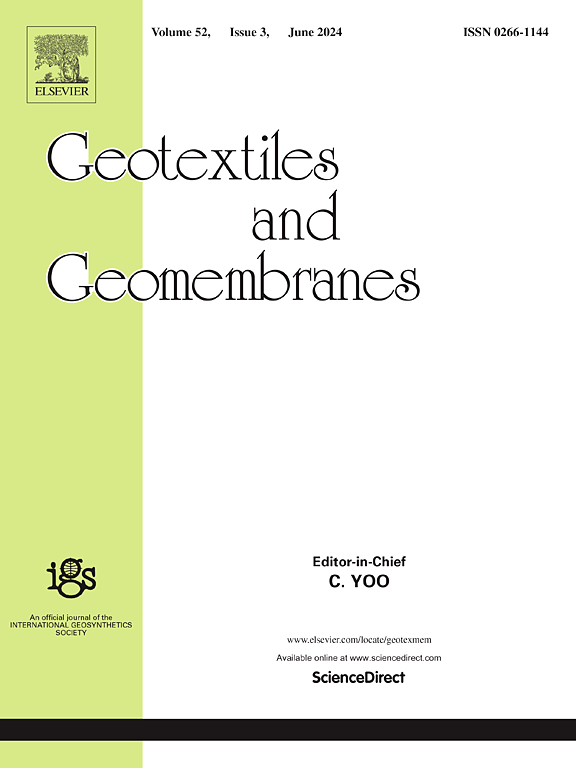3D DEM investigation of shear behavior and interaction mechanism of woven geotextile-sand interfaces
Abstract
This paper presents a numerical study on the investigation of microscopic mechanism governing the interaction of woven geotextile and angular sand employing the 3D discrete element method (DEM). The surface texture and tensile properties of the geotextile were simulated using overlapping spherical particles, and the angular sand was simulated using rigid blocks. The DEM models were fully calibrated based on previous experimental data. The shear and dilation zones of sand near the interface were quantitatively determined based on particle displacement gradients. Analysis of contact forces was conducted to explain the microscopic mechanism behind the macroscopic strength evolution. The influence of geotextile surface roughness on the shear strength of the geotextile-sand interface is also discussed. The results show that the failure mode of the woven geotextile-sand interface is a combination of particle sliding failure along the geotextile surface and shear failure of the sand within the shear zone above the interface. There is a rapid redistribution of contact forces prior to reaching peak shear resistance, and the average normal contact force within the shear zone remains relatively constant after the peak shear stress is achieved. A completely developed shear zone stabilizes soil deformation, typically after achieving the peak shear resistance.

 求助内容:
求助内容: 应助结果提醒方式:
应助结果提醒方式:


